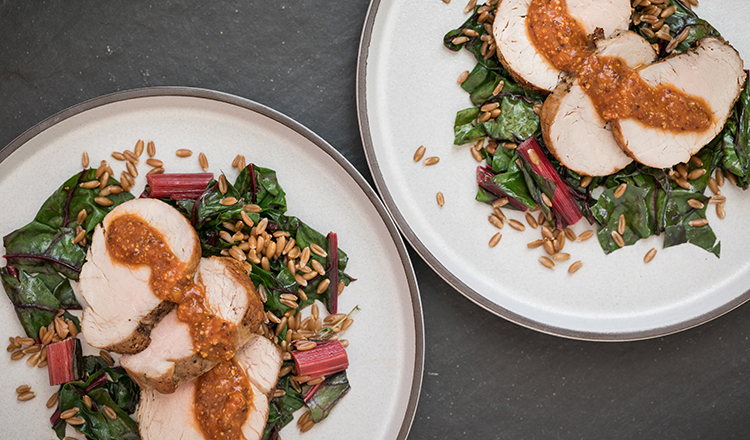
Just like you, we’re not making fully formed extravagant dinners every night of the week. Sometimes a basic pan-cooked protein + side is as good as it gets, like a sautéed chicken breast or seared pork chop.
But just like the foundations of French cooking tell us, nothing makes a simple dish better than an even more simple sauce. And luckily, once you’ve cooked your chicken or pork or steak, or whatever it is you like, you’re 80% of the way to the perfect sauce.
A pan sauce is a sauce made using the pan drippings leftover from sautéed meat. The brown bits, or the fond, are concentrated flavor—a little salty, a little sweet, and very savory. To make a sauce from the fond, we simply add a liquid ingredient to form the base and remove the brown bits from the bottom of the pan, and add any additional flavorings we may like.
Here’s how to make a pan sauce—no recipe needed!
- Season your meat, and sauté it to the doneness you like. Sauté is best, since it cooks the meat without added moisture, ensuring a nice fond. This method also works for roasted foods; everything we explain here can be done in a stainless steel roasting pan on the stovetop. Regardless of the method, the ability to create a sauce depends on the flavor leftover from the item you cooked.
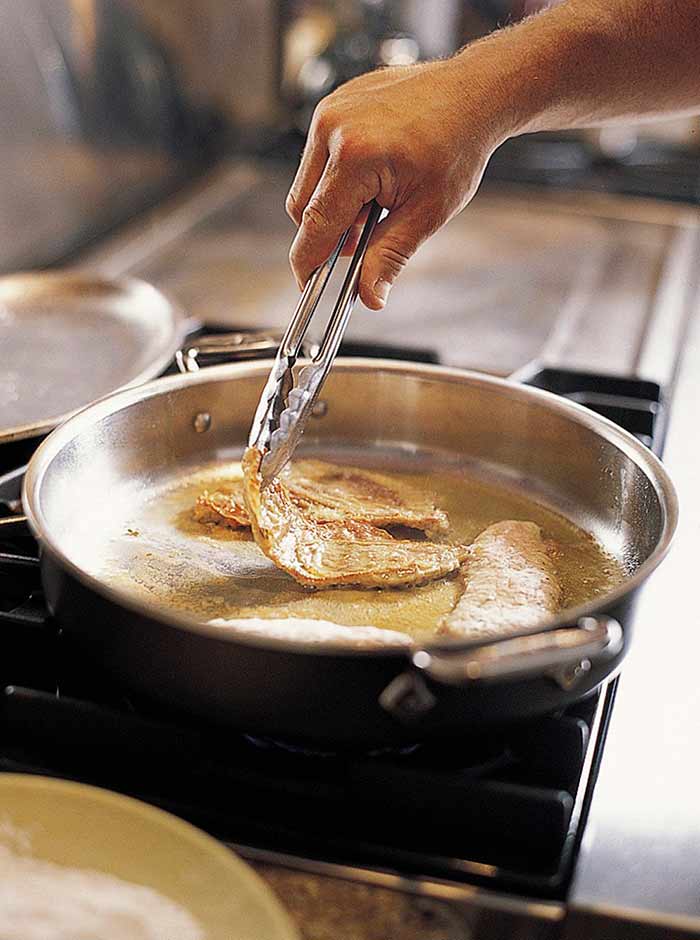
- If your pan drippings begin to burn, don’t panic! Add a few tablespoons of moisture to the pan as it’s cooking. Water, broth, wine, or even beer will do the trick. This will deglaze the pan and reconcentrate the flavors with just enough added moisture to keep it from scorching. You can do this as many times as you need.
- Once your meat is finished cooking, remove it from the pan and set it aside to rest. If there is a lot of fat left in the pan, pour out all but a tablespoon or two, and return the pan to the heat. If your main item is lean, like chicken breast, fish, or shrimp, add some butter or oil to the pan. Reduce the heat to medium, and add flavoring ingredients, like onion, shallot, ginger, garlic or some spices. You don’t need much: a few cloves of garlic, a quarter to half an onion. Let everything cook until the aromatics are soft, about 5 minutes, or if you’d like a deeper, richer flavor, let them brown and caramelize around the edges, about 10 minutes.
- You’ve surely heard the term “deglaze,” and now is the time to put it into action! Add a liquid to the pan to help loosen the brown bits from the bottom of the pan. You don’t need tons, just about 1 cup. Though you can use any liquid (yes, even water, in a pinch!), this is a good time to add some acidity to help balance your sauce. White or red wine, dry vermouth, dry sherry, beer, or even vinegar are popular options, but any kind of broth or stock works great, as well. You can combine one or more of these options depending on what you like and what you’re serving.
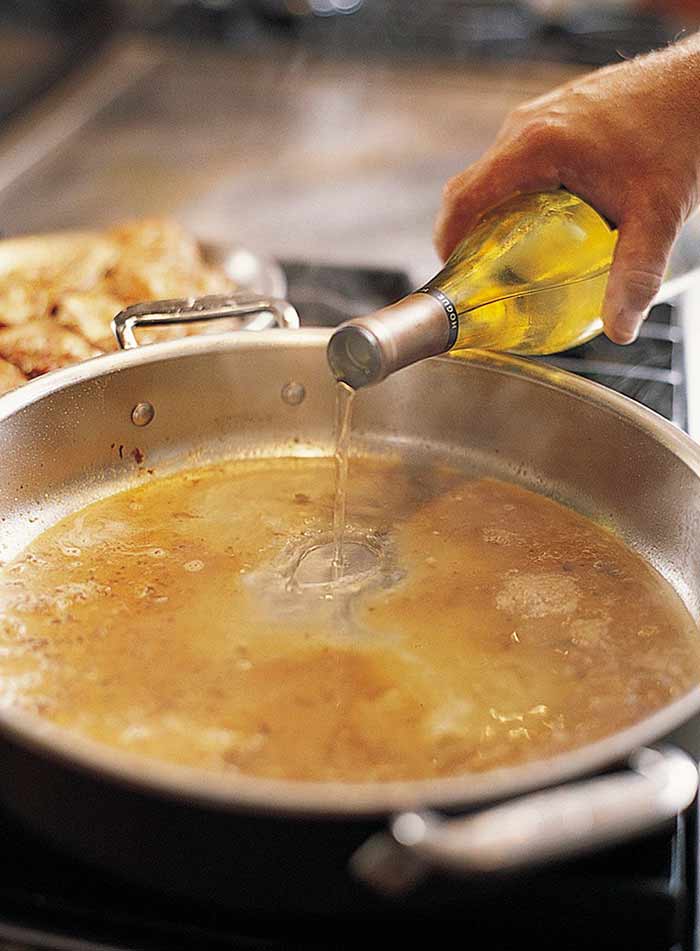
- Add any other flavors that you would like to incorporate, like fresh herbs, mustard, miso, or lemon zest. Let the mixture simmer and reduce until it tastes delicious and rich, adding more liquids, acid, or even honey as needed to balance the flavors.
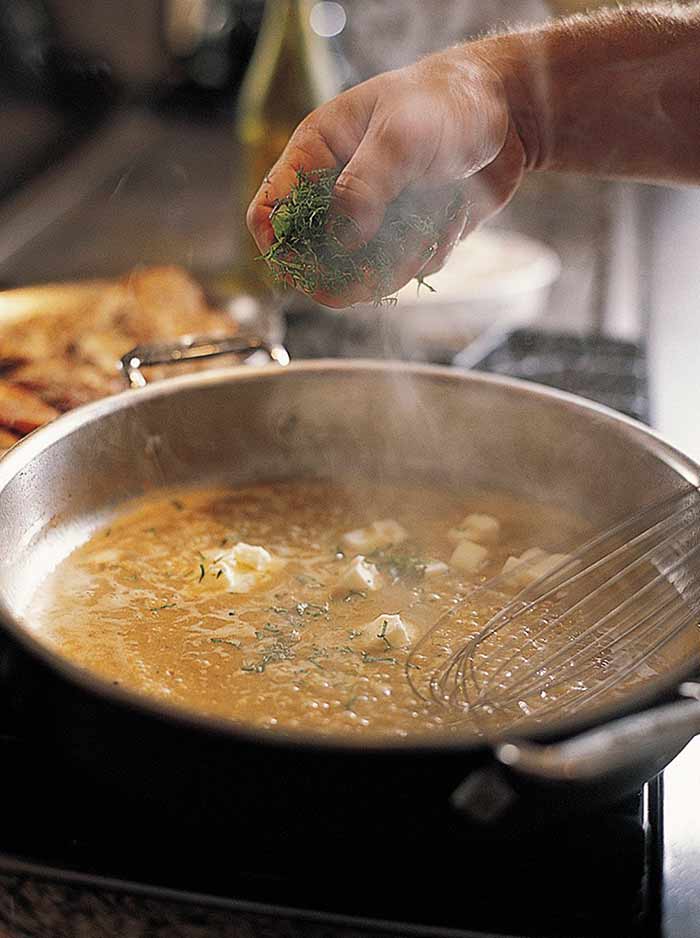
- When the liquid is reduced and the sauce is flavorful, remove it from the heat. You can serve it now, as is, or add a tablespoon or two of butter. Swirl the butter in the pan, allowing it to slowly melt and incorporate into the sauce to make it smooth and glossy (this is the trick that makes restaurant sauces so good!). Season the sauce with salt and pepper, and you’re ready to go. You can strain it, if you like, but for a casual dinner, you can spoon it over your protein and get to the good part.
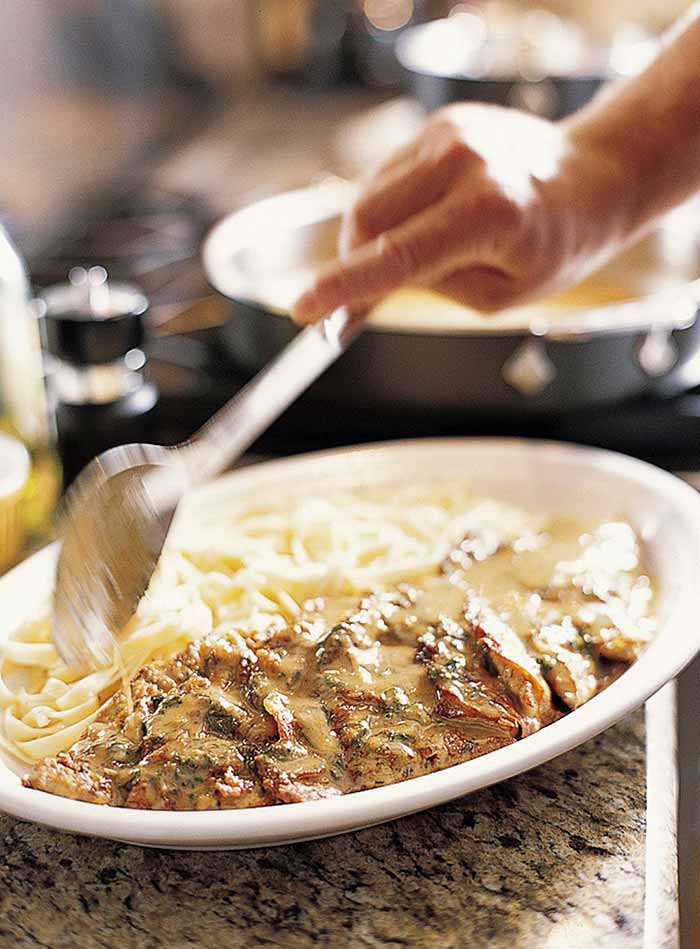
Notes:
- Pan sauces are not quite as easy with vegetable dishes, since vegetables tend to leave very little behind in terms of drippings and fond. That’s not to say you can’t make a pan sauce after sautéing or roasting vegetables, but you’ll need to add more flavors to make it rich and robust.
- If you do burn the fond in your pan, there’s unfortunately no rescuing to be done. To avoid a bitter sauce, make something on the side, like a chimichurri, or even just a simple vinaigrette to drizzle over your protein.
- If you need a little more guidance, this roast pork with honey-mustard pan sauce is a very good example. Chicken Breast with Fines Herbes Sauce has a few more steps and shows you how to incorporate a slurry for a sauce that is a bit more substantial.

Idk why sauces were never in my thought process, just figured they were too complicated. This takes the intimidation factor out of the equation.